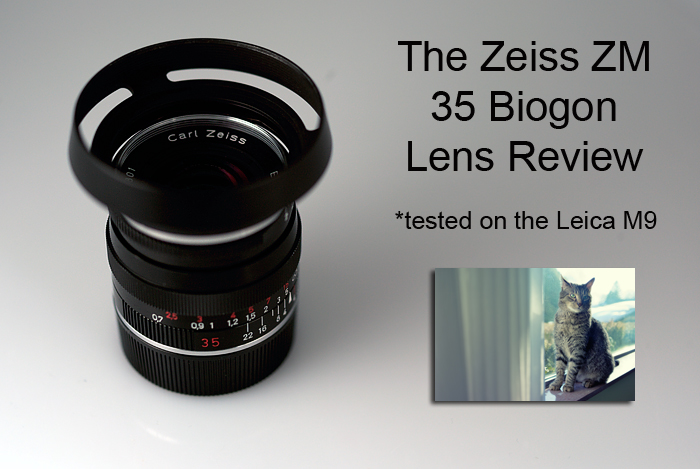
The Zeiss ZM 35 Biogon Lens Review
Hello to all! I am back again with yet another lens review for the Leica M mount! Today I will be writing about and reviewing the Zeiss 35 Biogon F2 lens. I remember when this lens was released it was causing quite the stir because it was gearing up to be a real competitor to the Leica 35 Summicron at a fraction of the cost. Many say that it is even better that the cron!
For years I wanted to give this lens a try because I have seen some really great results with it on the Leica M8 as well as M mount film cameras such as the Zeiss Ikon, Leica M7, etc.
This Zeiss ZM 35 Biogon now retails for $1000 or so and it has went up in price in 2010. The old price was around $900. The Leica 35 Summicron F2 lens sells for $2995 these days so this Zeiss is 1/3 the price. That adds up to be quite a savings! I have owned the 35 Summicron, the 35 Summilux and I currently own the Leica 35 Summarit which I really enjoy. But even the Leica summarit will set you back $1700, and it’s a slower lens with a f2.5 Aperture vs the f2 of the Zeiss.
Zeiss 35 Biogon at F2 on the Leica M9 – Set up as a 35 Summicron Pre-Asph in the M9 Menu
I was so curious about this lens I was about to buy one just to try it out! As luck would have it, out of the blue I received an e-mail from Zeiss and they offered to send me the lens to try out for a while. So for the past 3-4 weeks it has been on my Leica M9 and I have shot with it quite a bit. I even did some side by side stuff with my little Leica Summarit.
The Zeiss 35 Biogon f2 Build Quality. Is it as good as Leica?
I get many questions asking me if the Zeiss ZM build quality is comparable to Leica build quality. First of all, let me point out that the Zeiss ZM line of lenses are all made in Japan (all except the 85 Sonnar and the 15 Distagon which are manufactured in Germany). Leica lenses are made in Germany. What does this REALLY mean? Well, it means that the Leica lenses will cost more 🙂
When I first took the lens out of the box, I noticed it was larger than my 35 Summarit and my old 35 Summicron. It felt lighter and there was some play in the focus ring, much like the Zeiss 50 planar I tested out a few months back. I had no idea if this was a normal thing or if this lens has been loaned out so much that it was in need of some adjustment or repair.
When side by side with my little Summarit, which is a “lower end” Leica lens, the Zeiss was larger and not quite as well made but it was not that far off. Besides, what really counts is the image quality. If I could describe it in an easier way I would say that the Zeiss may last you 15 years before needing service and the Leica may last you 40 years before needing service. The Leica just seemed more solid.
My Leica summarit next to the Zeiss ZM 35 Biogon. I did not have the Summicron on hand but it’s only SLIGHTLY larger than the Summarit.
Also, let us remember that the Zeiss is 1/3 the cost of the lower end Leica Summarit, and it’s a faster lens with an f/2 Aperture vs t he f/2.5 of the Summarit! So I did not really expect the same build as the Leica. As with every Zeiss ZM lens I have tried the aperture ring is solid and clicks in to place without any worries of it clicking out accidentaly. It’s solid in that dept. I already mentioned that my copy had some focus play but it did NOT affect the actual focus results.
What about the Image Quality?
The Zeiss 35 Biogon F2 frustrated me early on. When I mounted it to the M9 it appeared to underexpose, have some severe vignetting and sometimes overly warm colors. I was shooting it uncoded of course and for the first few days I shot it without setting up any coding for it in the M9 “Lens Detection” menu.
Zeiss 35 Biogon at F2 on the Leica M9 – No coding. The lens will vignette on the M9 if not set up correctly. This is an out of camera shot.
Finally, after shooting with it for a while I set up the lens as a 35 Summicron pre-asph in the M9 menu. Once I did that all of the problems were just about gone. I started seeing beautiful results and started to wonder if this was a better lens than my 35 Summarit! I did some comparisons earlier with the two lenses and my Summarit always seemed more accurate in color with better contrast and sharpness. The Zeiss seemed to do better with 3D pop and had plenty of warmth. But again, this was before I set it up as a 35 Summicron Pre-Asph.
Leica M9 and Zeiss 35 Biogon at F2 – Set up as a 35 Summicron in the M9 Menu
This one had a cross processing filter applied in color efex pro…
With the Zeiss set up in the M9 menu as the cron I was getting rich color, 3 dimensional depth, and it was plenty sharp for any need I would ever have. I had just bought the little Summarit prior to getting the Zeiss in for review but I was not upset about that because the Summarit is one fine lens and it gives me superb results, and it is coded.
The issue with the Zeiss on a Leica M9 lies with the coding. If you forget to set it up in the menu then your images will have vignetting and sometimes odd color if shooting wide open at F2, or even 2.5. If you own this lens and have been shooting it with the Leica M9, give it a try. Go to menu, then “lens detection” and then set it up as the 35 f/2 11310/11311. This setting gave me the best results.
Once set up, the IQ is sooooo good at times, especially when you have really good light (this goes for ANY lens/camera combo as light is #1). The images have a warm glow with a rich feel. If you like warm and saturated, the Zeiss will not leave you disappointed.
Ugly Wallpaper Comparisons
I wanted to see how much improvement there really was when setting up the lens in the M9 menu so I set up my tripod and did my “ugly wallpaper” test. Here are the results…
M9/35 Biogon without any setup in the M9 menu. Notice the vignetting even at f/2.5 – Also some odd color casts.
Let’s see what happens when it is set up as a 35 Summicron Pre-Asph in the M9 “Lens Detection” menu:
Much improved but it is not perfect. Since I was all set up in the room with the M9 and tripod, I threw on my 35 Summarit just for fun.
MUCH better! The 35 Summarit, being a Leica lens and coded for the M8/M9 does a better job in the vignetting dept. than the Zeiss. But again, this is wallpaper and there is no way in hell I would ever take a photo of this ugly ass wallpaper so let’s see what the Zeiss can do out in the REAL WORLD. BTW, this wallpaper was in a room in my house when we bought it and the wife is STILL bugging me to strip it off the walls 🙂 After a year, I still have it on my “to do” list!
Real World Samples
I know and you know that what matters most with a lens or camera is how it performs when taking actual images, not images of walls or test charts. If it can do a good job of delivering high quality images, in other words, what it is made for, then it doesn’t matter what the test charts say. I wanted to get out there with this lens and decided to take a short 36 hour road trip!
I went on the road with my Mother (the wife has a VERY busy schedule) and brought along the Zeiss 35 and the M9 (as well as the S2 and other goodies). Here are some of the images from that trip with the Zeiss. You can click on any image for a larger view…
Zeiss 35 Biogon at F2 on the Leica M9
As we headed into the state of Kentucky I spotted a log cabin. I pulled the car into this field and on my way back I snapped a shot off. This image has the typical warm and rich Zeiss colors.
Zeiss 35 Biogon at F2 on the Leica M9 – No coding
I forgot to set the lens up as the 35 cron for this one. I had my 50 cron on the camera and it was set to “Auto” so you can see some vignetting in this one. This was a small dirt road we went down called “Booger Drive”.
Zeiss 35 Biogon at F2 on the Leica M9 – No coding
Again, I forgot to set up the lens (I actually thought it was already set up) but as you can see, in a real image it doesn’t really matter. The vignetting here adds to the mood and I love the colors.
Zeiss 35 Biogon at F2 – No setup/coding
Man, it seems like I NEVER remembered to set this lens up! That was the big problem. With my Summarit it was automatic, with the Zeiss it was NOT so if I forgot then the vignetting would creep in. But still, I love the look here.
Zeiss 35 Biogon at F2 – Lens setup as the 35 Summicron Pre-Asph in the Leica M9 menu
Finally, I remembered to set it up 🙂 Looks MUCH cleaner now…
So in real world shooting you can see that the Zeiss Biogon did pretty damn good on the M9. When I look at the 35 Summarit shots from the same trip they appear sharper and a bit more clinical than the Zeiss, but also they have more “brilliance”. It’s the usual Leica vs Zeiss thing and is pretty much personal preference. Here is an image from the Leica 35 Summarit:
Leica M9 and Leica 35 Summarit at f2.5 – The summarit is a bit more “perfect” than the Zeiss on the M9.
Sharpness and Detail of the Zeiss
So I have already established that this lens renders colors in a warm and pleasing way. I have also shown that it has a nice 3D rendering and when set up as a Leica 35 Summicron PRE-ASPH on the Leica M9 most of the issues go away (but not fully). In real world photos the results are very nice. Some may find the colors a bit TOO WARM but others will like the effect.
But what about sharpness? The Leica 35 Summarit is a very sharp lens and in the full size version of the above image the detail is amazing. What about the Zeiss? Well, it is also a VERY sharp lens but it’s about 90-95% of the Summarit in the detail arena. Not as bitingly sharp, and for many things this is a GOOD thing. Portraits for example 🙂 Here is an image I shot with the Zeiss at F4 along with a crop. At F4 it’s just as sharp as the summarit is at 2.5.
The detail is pretty impressive here if you ask me! The lens was NOT set up as the summicron so you still have some vignetting (even at F4) but it did not hurt the detail. At F2 it has a hint of softness and glow but it sharpens up quite nicely after that.
How about on Micro 4/3?
I did try this lens briefly on micro 4/3 but again, since I own and shoot the M9 I never really find myself wanting to use those lenses on the E-P2, so I tested it out and that was about it. Here are a few shots taken with the E-P2 and Novoflex M to m4/3 adapter, both at F2:
Olympus E-P2, Novoflex Adapter and Zeiss ZM 35 Biogon at F2
The lens seemed to do fine on the Olympus E-P2 with the Adapter but remember, the lens will act like a 70mm focal length and you will not get the same look and detail that you would get on an M8 or M9.
The Zeiss 35 Biogon or Leica 35 Summicron
I used to own the Leica 35 Summicron ASPH which now goes for $2995. Many say the Zeiss is a better lens and you have your fans of each brand. Me, I personally think the Zeiss may give you images that are more pleasing to the eye at times but the 35 Summicron will give you more accurate color, sharper out of focus transitions at F2, and better build quality. It really comes down to what look you are after. At F2 think “round/warm” for the Zeiss and “sharp/perfect” with the 35 Summicron ASPH.
Personally, when you take everything into consideration like price, build, and image quality then it would be hard to dismiss the Zeiss. That is why I say if your budget goes up to $1000, the Zeiss would be a great choice. If you have more to spend, go with your heart and eyes. Which look do you prefer?
PROS and CONS:
PROS:
- It’s not cheap but it’s not crazy either. About $1000 for a fast 35mm for your M mount camera.
- Great warm colors, 3D depth and great detail.
- It’s a Zeiss!
- Build is very good (but not Leica like)
- Seems to do great on m4/3 with adapter.
CONS:
- It’s larger than the Leica Summarit and Summicron.
- It’s hood is a twist on and it is large and is an extra accessory to buy.
- No coding on the lens means it can be problematic on the Leica M9.
- Vignettes some at f2-f4 on the M9.
- No case included.
- My copy seemed to have some play in the focus ring just like the Zeiss 50 planar I tested so build may not be up there with Leica.
The Bottom Line Conclusion
For the money, the Zeiss ZM 35 Biogon f2 lens is a winner any way you look at it. On M mount film cameras it is superb, on the M8 it is superb and on the M9 it CAN be superb if you remember to set up the lens in the Lens Detection menu to a 35 Summicron pre-asph. The lens is sharp, it has gorgeous rich color, and at f2 you can even use it in some low light situations if needed. If shooting on an M9 just remember to either get the lens coded or to set it up in the M9 menu for best results. In many ways I liked it a little better than my Leica 35 Summarit. I’m a sucker for that Zeiss look and in some of my photos I felt like I could reach out and touch what was in the image.
Some photographers LOVE Zeiss glass and if you are one of those who love the 3D qualities of Zeiss then the Biogon will be right up your alley. It did not disappoint and I have even sold a few prints from one of the photos made with this lens. For the money you can not beat it in the M mount 35mm focal length arena!
If you are looking for a nice 35mm for your M mount camera and have a budget up to $1000 or so, THIS is the lens to get. I would buy mine at B&H Photo as this is where I have been shopping for close to 15 years. They are #1 in my book for anything photo related as well as Mac computers, hard drives, software and so much more. If you follow my links here and make a purchase then you are helping to keep this site going and growing as I will get a tiny commission for any sale generated from my links here. So, if you enjoyed this review and found it helpful feel free to use my links to this lens HERE for black or HERE for silver! Thank you for reading my Zeiss ZM 35 Biogon review!
Here are even more samples from my time with this lens! These images have some post processing as they are part of my “Rural Landscape” series and they are prepared for print.
This one has had some contrast, color, and highlight tweaks. Also, a filter from Color Efex pro was used as well as cloning the fence on the right to the left. I sold 5 prints of this image in one week and it was shot with the Zeiss 35 at F4.
Here is another with some post processing. The Zeiss just has that 3D quality and it is so cool on these types of images. All I did here was add the “low key” filter in color efex pro. I then took the dodge tool to brighten the building. I then added some blur around the house. These simple steps gives the image a very moody and dreary look. Just what I was going for. Took 10 minutes. BTW, this one was shot at F2.
and one more…did the same thing as the one above, just not as intense! This lens is the most 3D lens I have ever shot with.
HELP SUPPORT THIS SITE TO KEEP IT GOING AND GROWING!
Remember, anytime you follow my links here and buy from B&H or AMAZON, this helps to keep my site going. If it was not for these links, there would be no way to fund this site, so I thank you in advance if you visit these links. I thank you more if you make a purchase! I have nifty search bars at the upper right of each page so you easily search for something at either store! I currently spend 14 hours a day working on this site and the only way that I can pay for it is with your help, so thank you! Also, if you are interested in any prints from ANY images you see on this site (taken by me of course) let me know as I sell prints from my “Rural Landscape” series which grows every week.
If you enjoyed this article/review, feel free to leave a comment at the bottom of this page and also be sure to join me on twitter or facebook! Also, you can subscribe to my feed at my subscribe page HERE and read these posts in your browser or news reader! Also, interested in becoming a guest writer? Contact me! Thanks so much for visiting my site!
[ad#Adsense Blog Sq Embed Image]

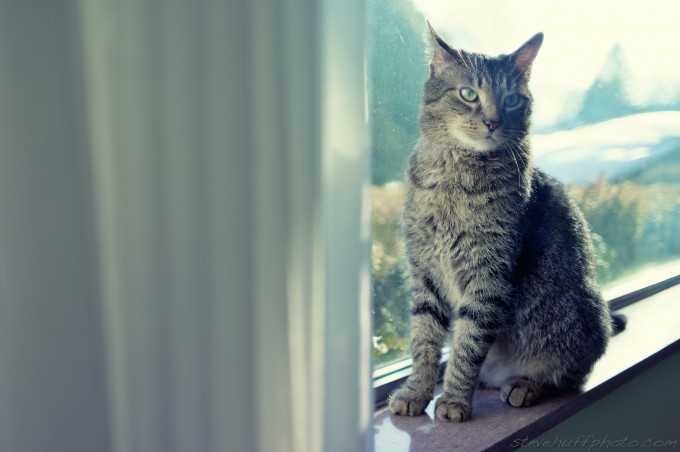
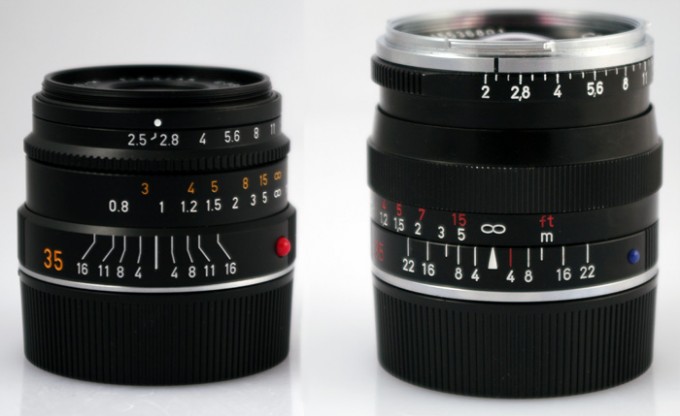

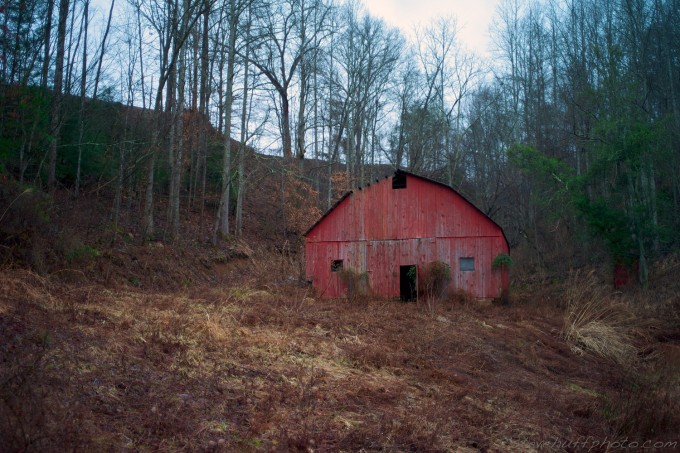
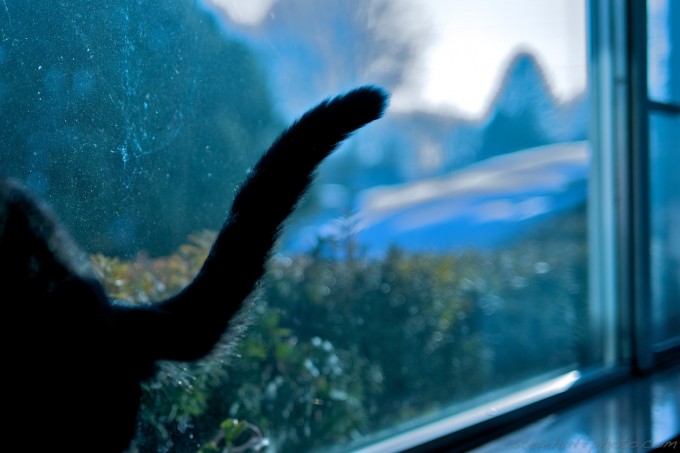
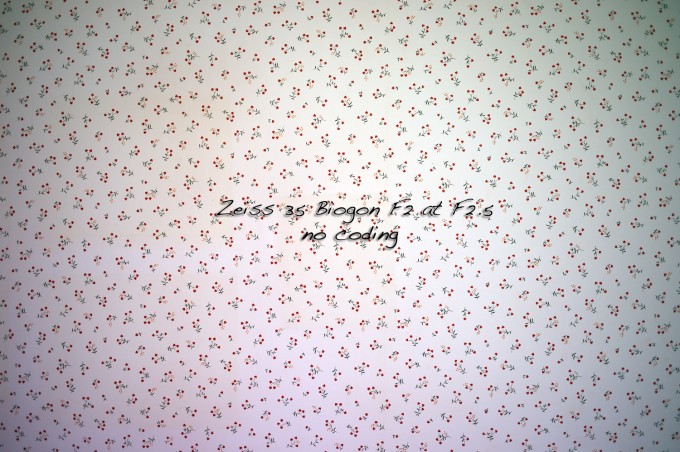
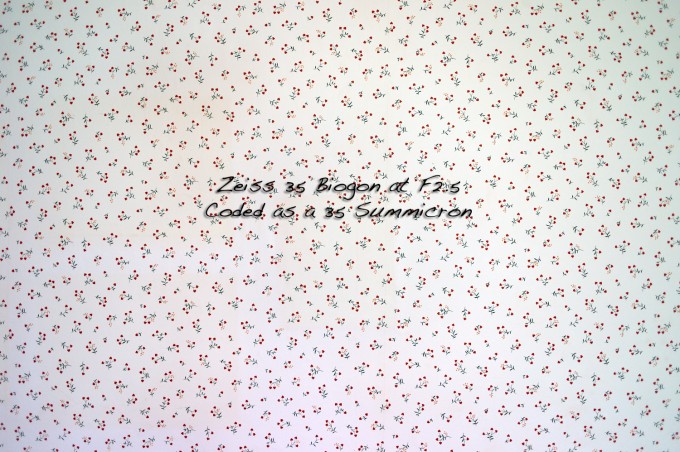
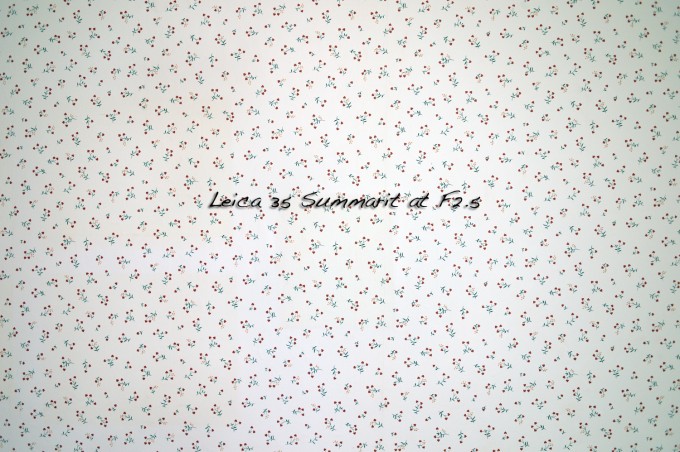
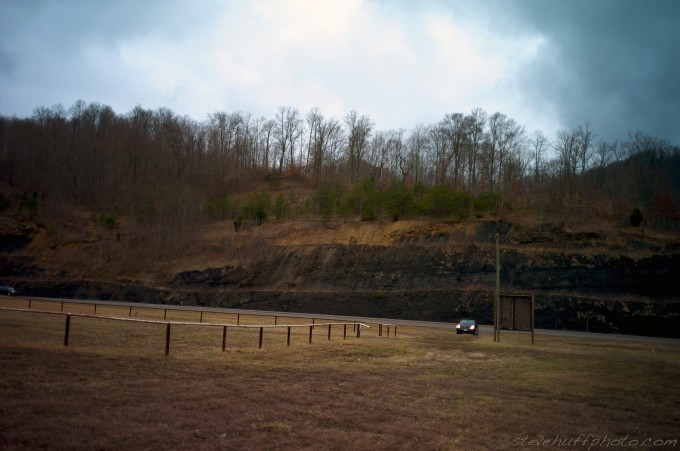
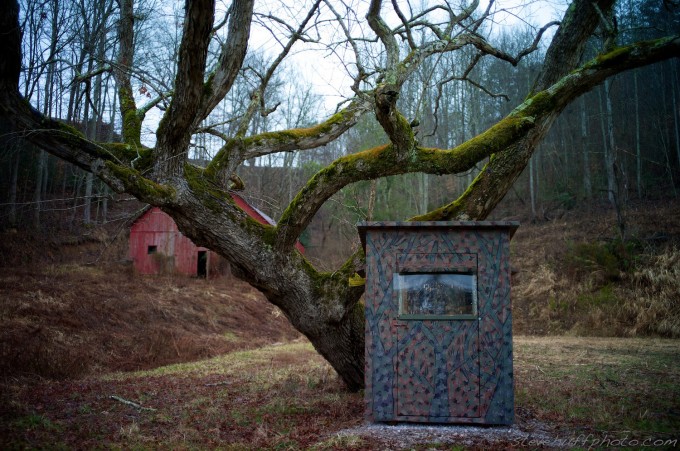

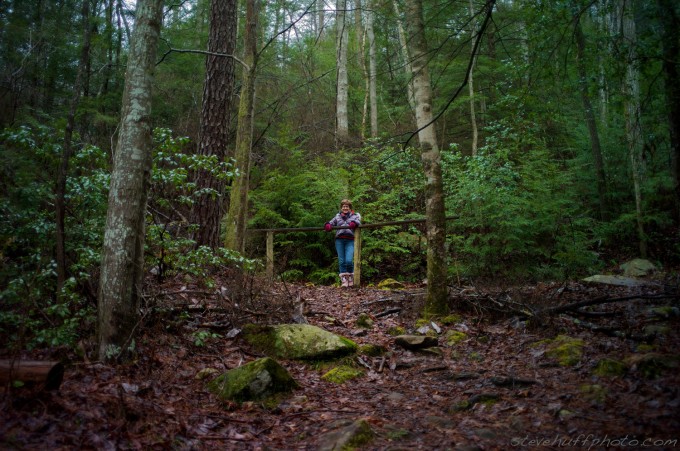
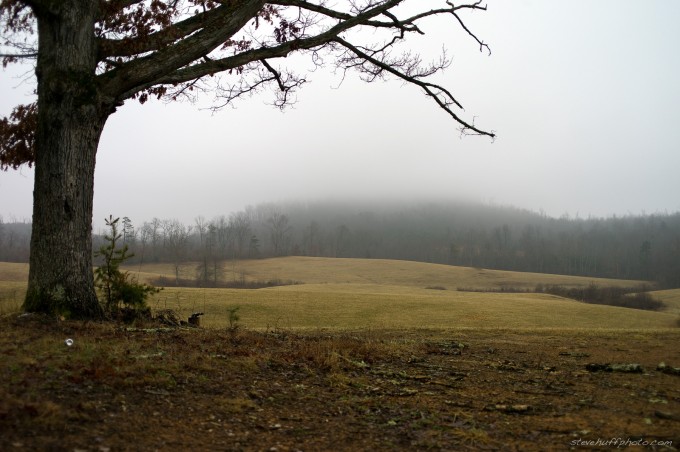
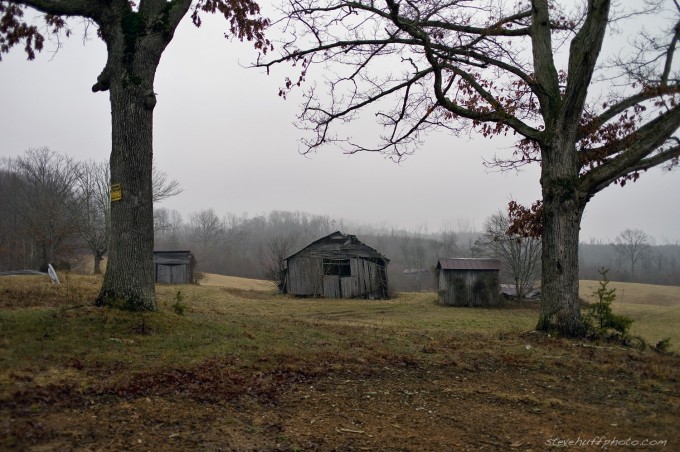
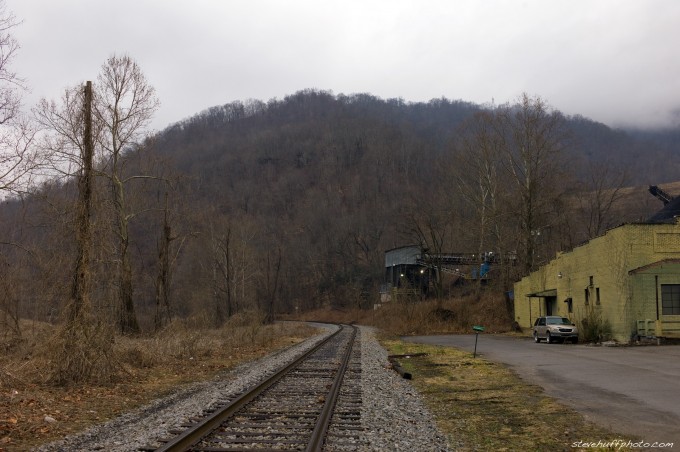
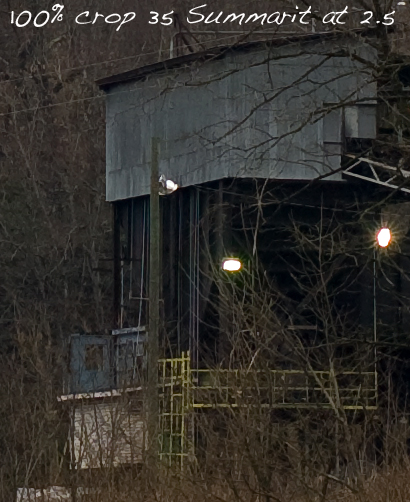
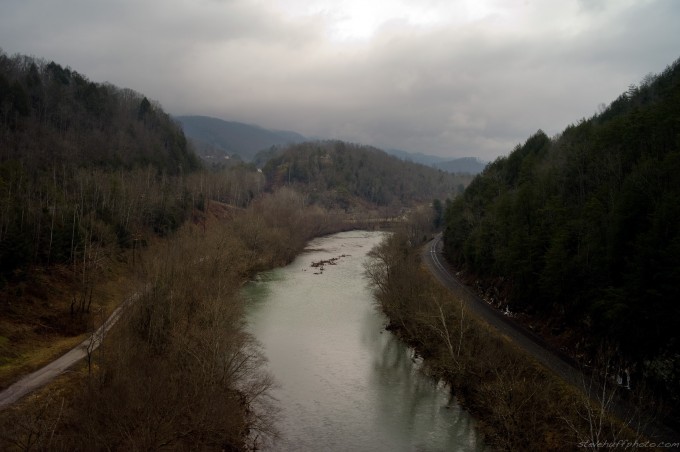
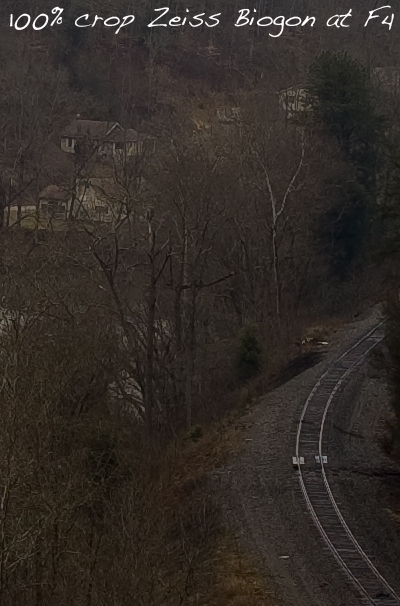
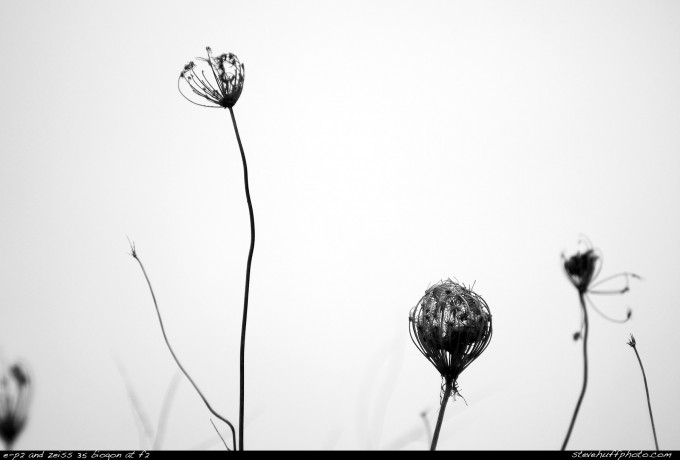
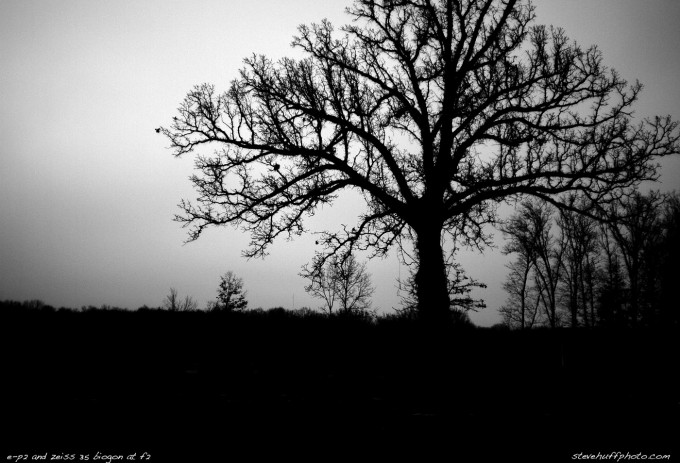
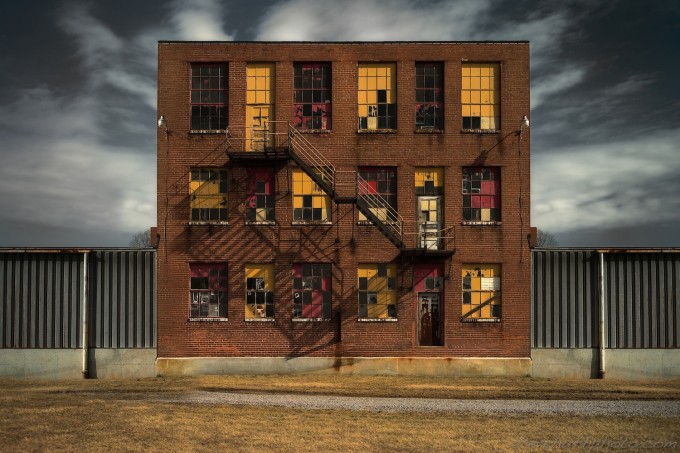
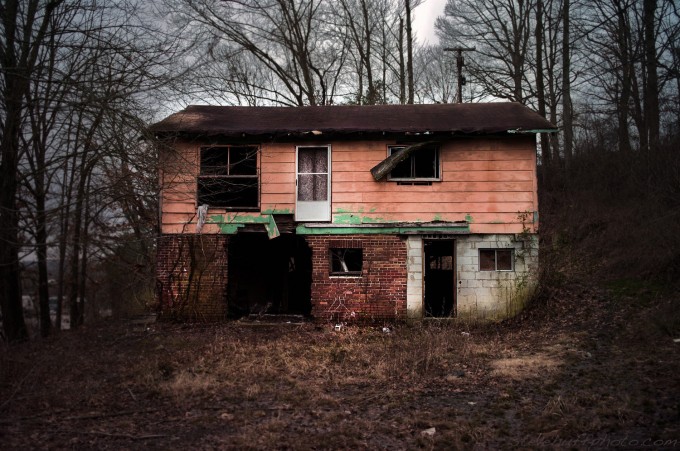
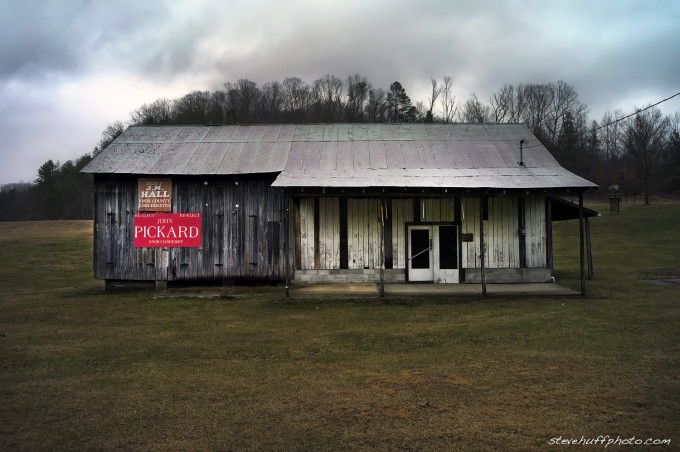


Excellent review Steve.
Is there any way to set up my zeiss ZM 35mm f/2 on the Sony A7R to reduce vignetting at f/2-f2.8 ?
I use a voightlander close focus adapter.
Many thanks
This lens also vignettes and has color shift on Leica M9 and M bodies as well as earlier A7 bodies. It may work perfectly on the RII due to the backlit sensor. But have not tested it yet.
An excellent review, which like your others has really helped me in my choice of lens. I used this Zeiss 35mm on an M8 with cracking results and now on an M-E, where I think the detail and 3D ‘pop’ is every bit as good as my with my 50mm Summicron. Many thanks, Jethro
Dear Steve,
Thanks for the review. I recently purchased a Leica M4 and now I wish to buy a Zeiss ZM 35mm F2 Biogon.. but had a few doubts concerning the viewfinder blockage. Is it too much? It will be really helpful if you could add a few photos of the viewfinder showing the viewfinder blockage through the view finder.
Would appreciate if you could help me out with this.
Thanks So much!
Apu
Hi,
I read that if you shoot in raw mode the coding just grabs information on the lens used, is that true? I am currently shopping for used lenses to fit the Leica M I ordered.
We have the same wallpaper! red flowers with green petals
Hello Steve, I know you’r shooting wide open most of the time. Still I regret, when you compare lenses, that you don’t compare apertures F5.6 and F8 that much. Before buying my Zeiss Biogon 2.8/28mm ZM, I compared it at our local distributor with the Leica, I believe it was the Summicron-M 28 mm f/2 ASPH, on a M9, and got clearly more detail with the Zeiss at F5.6 and surely at F8. I was in those images looking for the broadest depth of field with the most detail all over the image. I often need this in my job. I know it’s not your thing, but still I regret that you don’t pay more attention to it.
Still, I love your reviews and your work so much, and I’m sure in my personal pictures, I’ll surely look for more 3D and shallow depth of field. You’ve really inspired me!
I agree. It would be more useful if lens tests showed the best a lens could do at its “sweet spot”, i.e. how sharp a lens is, how contrasty, etc. Moody, wide-open pix may look nice but don’t really allow us to judge a lens’ full capability.
I think for a guy like me that primarily shoots with a 50mm a nice Zeiss will do the trick. Thanks for the great review.
Thanks for the write up. Just ordered from B&H through your link.
Steve,
If I were to get this lens for an m8.2, would I need to add coding to it or would it be fine because its a crop sensor?
Thanks,
Thanks for the review. I personally love my Zeiss 35 f2 Biogon – it is my most used lens on an M8.2.
Thanks for the review. I have the 35mm Biogon, and need more time and pictures with it before I decide how much I like it, and which 35mm I will keep (I also have a VC 35mm f/1.4). On the other hand, I *love* the 25mm Biogon. Love at first shoot, no question about it.
PS: I think you have a typo in the article:
“Also, let us remember that the Zeiss is 1/3 the cost of the lower end Leica Summarit”
You probably meant to say that the Zeiss is 2/3 the cost of the Summarit?
Thank you very much for answering so fast. Now i understand how it works. 🙂 That it will be a telephoto is right, of course. But i can buy a wider lens, so that i become a better angle. Perhaps a 21 or 25 mm lens. Now i know that i can use every manual lens on mFT with automatic exposure. I only have to set the aperture and thats what a photographer does anyway. I don’t want to shoot in “P” mode ;-). Very good, thank you very much, you helped me a lot.
I think filming will be great too with that lens. No AF noise. Have you tried it?
And could you post some more photos of the Zeiss on mFT. There are only B&W photos, so i can’ t compare to all the other photos. That would be very nice. Although this is not the object of the test. But one or two more images would be great.
Greets
Ole, thanks for the comments. The Zeiss 35 would be great on any m4/3 camera. It’s very simple to use but I would recommend the E-P2 due to the high res EVF which makes focusing easy. Basically you would choose your aperture on the lens and the camera would pick exposure. Very simple. Just shoot in “A” mode.
As for the look, yes, the lens has quite a bit to do with it but you will not get the same look on a m4/3 because the 35mm will essentially turn into a 70mm, more of a telephoto. Also, due to the different and smaller sensor in the m4/3 line, the image quality will not be quite the same but it can be very nice.
Even a voigtlander 35 1.4 would be nice on the E-P2 but it has some flaws wide open (I like them).
This is a very nice review. I love the images. I like the photos such lenses produce more than any other high quality pro-dslr photo. It’s more emotional, i think. But i don’t know the right word, i’m not native english speaker, sorry.
Now i’m hardly considering to buy the Zeiss lens. But i want to buy it for the E-PL1/E-P2. You haven’t write very much about, because you have a leica ;-), i know. But i can’t afford it, so i have to be satisfied with the leica for poor (mFT) 😉 Do you think it will be a good buy for the Olympus? Sorry, but i don’t know, how to operate with such a manuel lens on an AF-Cam. Can you help me? I must focus manually, that’s what i know. But what about the right exposure? Do i have to set aperture and time fully manual? But when i don’t know the right combination of aperture and time? That’s complicated for me. Or can i use the automatic exposure?
So you see, i don’t know how to handle such lens. 😉 I don’t want to bug with my stupid questions 😉 but can you say me if this is the right lens for me. Or shall i look at Voigtländer? I want to own a manuel lens, because i want to have such special looking images you take. They have the feeling i love. And i think you only can get this with a manuel lens. Or am i wrong? Thank you very much for answering. Greets from the Home of Leica 🙂
Francis, those Leica wides ARE way too expensive for most, including me 🙂 Probably why I do not own any.
Dan, Thanks!
Bruce, thanks for reading it. That would be a pretty cool feature for Leica to add. Who knows, maybe they will but I doubt it.
Ashwin, yes the 35 seems to do a better job on the M8 and I agree, that Zeiss 25 may be the best of the Zeiss lineup though it also has some issues if not set up in the M9 as a 28 Elmarit.
Cidereye, this is a really good lens on the M9 if set up correctly.The CV 35 PII IS indeed a great little lens. I had one at the same times as the 35 Cron a few years ago, and on the M8 the CV was pretty close to the cron. That lens is one of the really good CV lenses.
Nice review Steve, I’ll be honest and say you don’t really sound too convinced on the Zeiss’s ability when push comes to shove and money spending time. I’d be most interested in a comparison between the Zeiss 35mm and the CV Skopar II Pancake 35mm f/2.5, with the CV lens being *half* the price of the Zeiss I’d say it probably has the beating of it especially as it doesn’t seem to suffer many of the issues such as back focus problems that it’s dearer 35mm f/1.4 bigger brother does.
great review steve, as usual. i think my next lens for the m6 will be a zeiss. i think the choice between leica or zeiss is down to which ‘look’ you like as much as it is price.
it’d be good if leica put a warning up on the lcd when you change lens and it doesn’t detect any coding. like a warning that says ‘lens setup’ or something. and it stays up on the lcd the shutter release gets pressed.
Stellar review. Seems to be a bit of a tweener lens. For the extra few hundred, am I right in supposing that you’d go for the summarit, Steve? The biogon seems to be a better performer on the M8 than M9, from what I am hearing….
Alas, I still miss my Zeiss 25…which seems to be one of the best of the bunch…
Love the cat image..it has something from a 70’s film image aura.
Hi,
Thanks for the review, nice shots in rather dull light. I personnaly bought the cron asph 35 for my M8.2, the Leica wides were Wayyyy too expensive, no summarit shorter than 35mm, cron, elmarits and lux in the sub 35 are very expensive. So I went for the Zeiss 21mm f2.8, the fastest below $1500 21mm for my M cam. This gives me the chance to invest in excellent longer focals which are cheaper. A slash of sharpie (I bought a $60 M coding kit) and any coding issue is resolved for good. Oh I also got the CVNokton f1.1 as a fun lense for once in a while usage, the one always attached to my cam is the 35 cron. Now I have a bit of cash for a 90mm, Summarit or summicron…not sure yet, just happy I did not blow all my cash on the Elmarit 21. I guess for the 50mm shooter, who wants a tad wider, this ZM will do the job big time. hanks for helping putting things in order for us.
Steve,
It’s the right one, originally it was too large to be seen in your blog. It looks ok now, after I reduced it by about 90 percent, although the amazing details are not shown in such a small image.
Roberto
Hey Roberto, is that not the correct image? I can take it out if so.
whoops, I messed up, I don’t know how to fix this image….sorry
Steve, I thoroughly agree with your assessment of the Zeiss Biogon family of lenses. After reading about the 25mm f.2.5, I got mine via these pages from B&H. Here’s an image at f. 2.5 taken with available light.
Best, Roberto [img]http://purojazz.com/Carmel.JPG[/img]
Thanks again for an enlightening review, really helps to form an understanding of how these lenses relate to one another.
The price/quality relation was a key point when finding the first (and so far only) lens along with an used M8 in November. Been shooting a ZM 35/2 ever since and the results can be seen at my Flickr-profile.
@ Bubba, that is why I say it vignettes ON THE M9. Also, it is a coding problem ON THE M9. If it is set up/coded then no problem. If not, then it vignettes. Again, this test was done ON THE M9 so of course i will highlight that. Thanks for reading 🙂
@Konstantin – Thanks for reading! Honestly, I have not shot with any vintage crons. But Zeiss glass has a totally different look with its color and rendering so I do not think they would be the same really.
@Ramon – Thanks! See answer above 🙂
@Massimom – I agree with the color of the 50 on the M9, and I could see that color in my review of that lens. I bet on film it is amazing and if I shot film, I would probably buy the Zeiss line without hesitation.
@Joseph – Thanks!!!
@Ben – Thank you for reading!
@Christer – Ha ha…
@Kitok – Thanks for reading and you are correct! The 15 and 85 re made in Germany. I should know, I have had the 85 here for a month! Thanks!
Highlighting the coded and uncoded bit is a wrong for the lens comparison. The vignetting is digital sensor problem. Not a lens problem.
Thanks a lot for the review, Steve! I am happy to see that it is such a great lens. Do you have any observations on how it compares to vintage Summicrons? I have one from the late 80s which is absolutely superb which I got for about the same price (in perfect condition) as the retail of this Zeiss. Thanks again for the great real-life shots! Those are indeed very helpful!
Steve, thanks for the great review! I really like the photo with the EP-2 and Biogon! That aside, how would you compare the Biogon with the 35 version IV pre-asph cron? Best, Ramon
Great “real world review” once again Steve. Thanks! Have to agree that, especially with film Ms, I love the rendition of the Zeiss lenses and their 3D qualities. On the M9, my 50 Planar gives me some cartoonish color at times and I find myself desaturating often. With transparencies though it can be absolutely stunning and also wonderful with black & white, as it gives a very painterly look with its drawing-like qualities.
Steve- great review as usual. I really appreciate all the pics an real life shooting. I still enjoy my old, rebuilt, pre-asph cron. Also, I have finally saved enough pennies to buy a M9. I will buy it through your links once they are available again. Keep up the great work! JT
Thanks steve make me set on leica 35f2.5
i very much like the wallpaper you use for testing. please keep it. wives can err.
Steve, thank you for another enlightening “real world” review.
I am actually contemplating the 35 Summicron / Biogon purchase decision right now so this article is timely. I am happy to say that it has only made my decision more difficult.
I would like to point out a possible error in your article. You stated “the Zeiss ZM line of lenses are all made in Japan”. I do not think this is correct. On its own website, Zeiss states “the highly sophisticated lenses Distagon T* 2.8/15 ZM and Sonnar T* 2/85 ZM are manufactured at Carl Zeiss, Oberkochen in Germany”.
Keep up the good work!